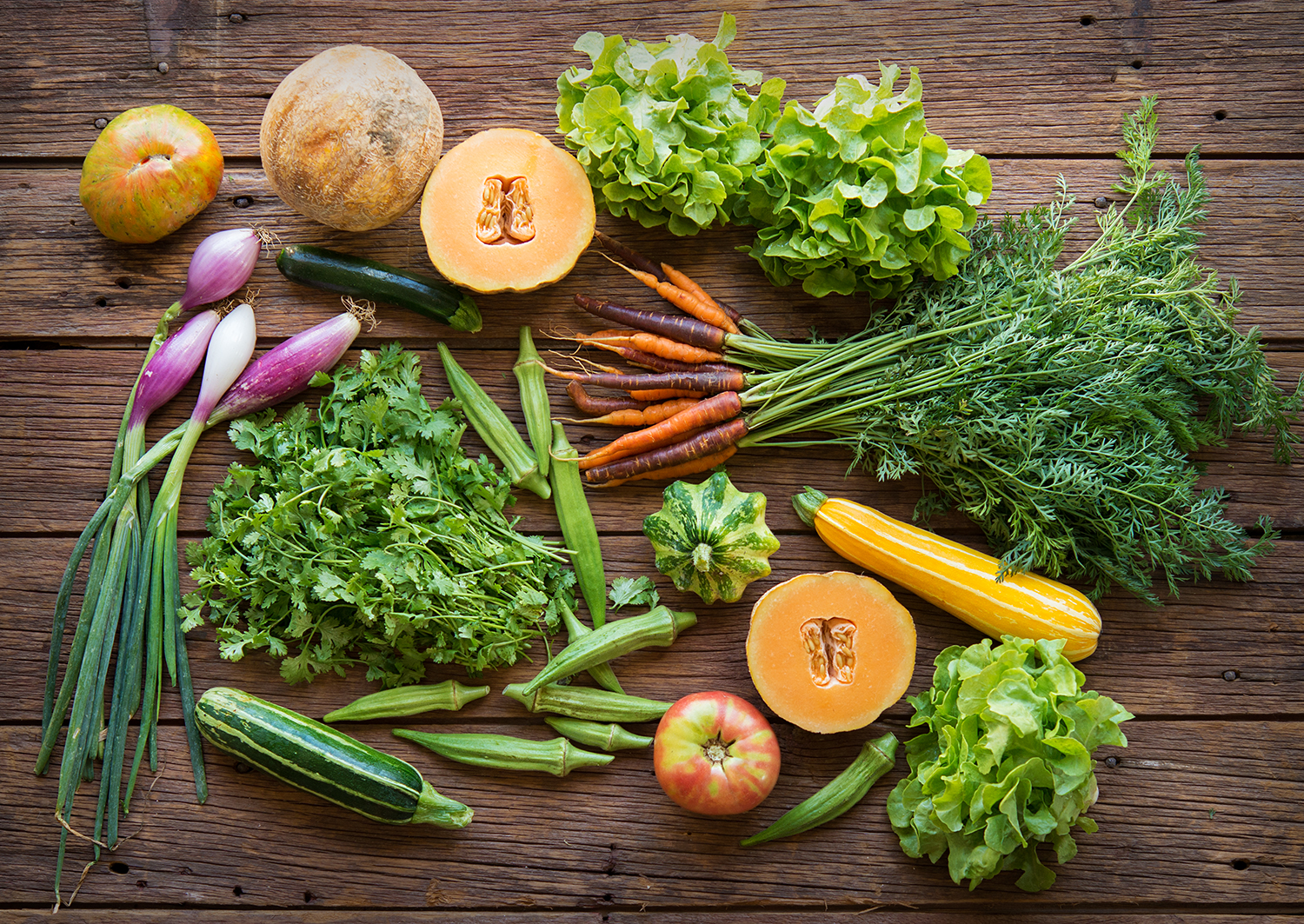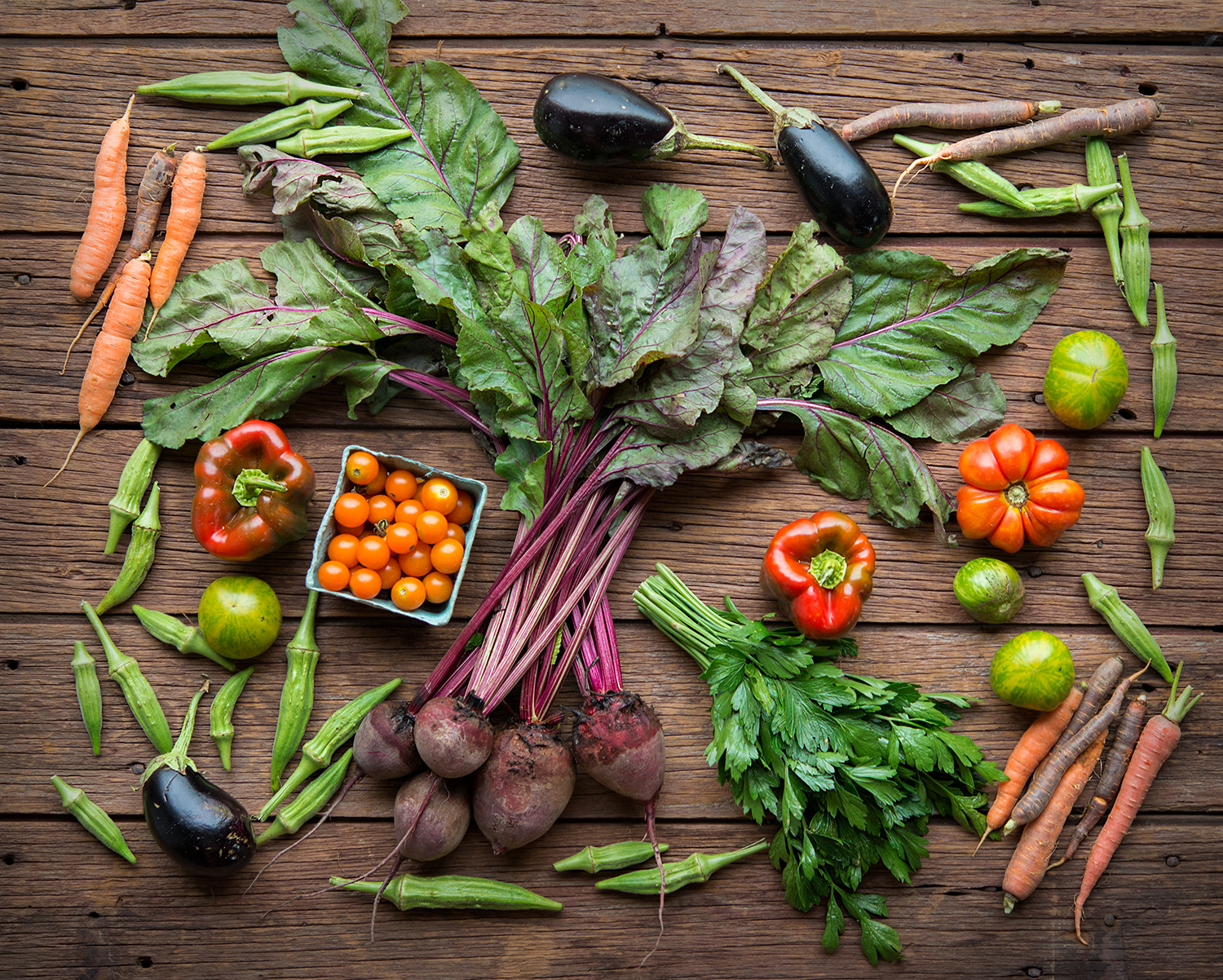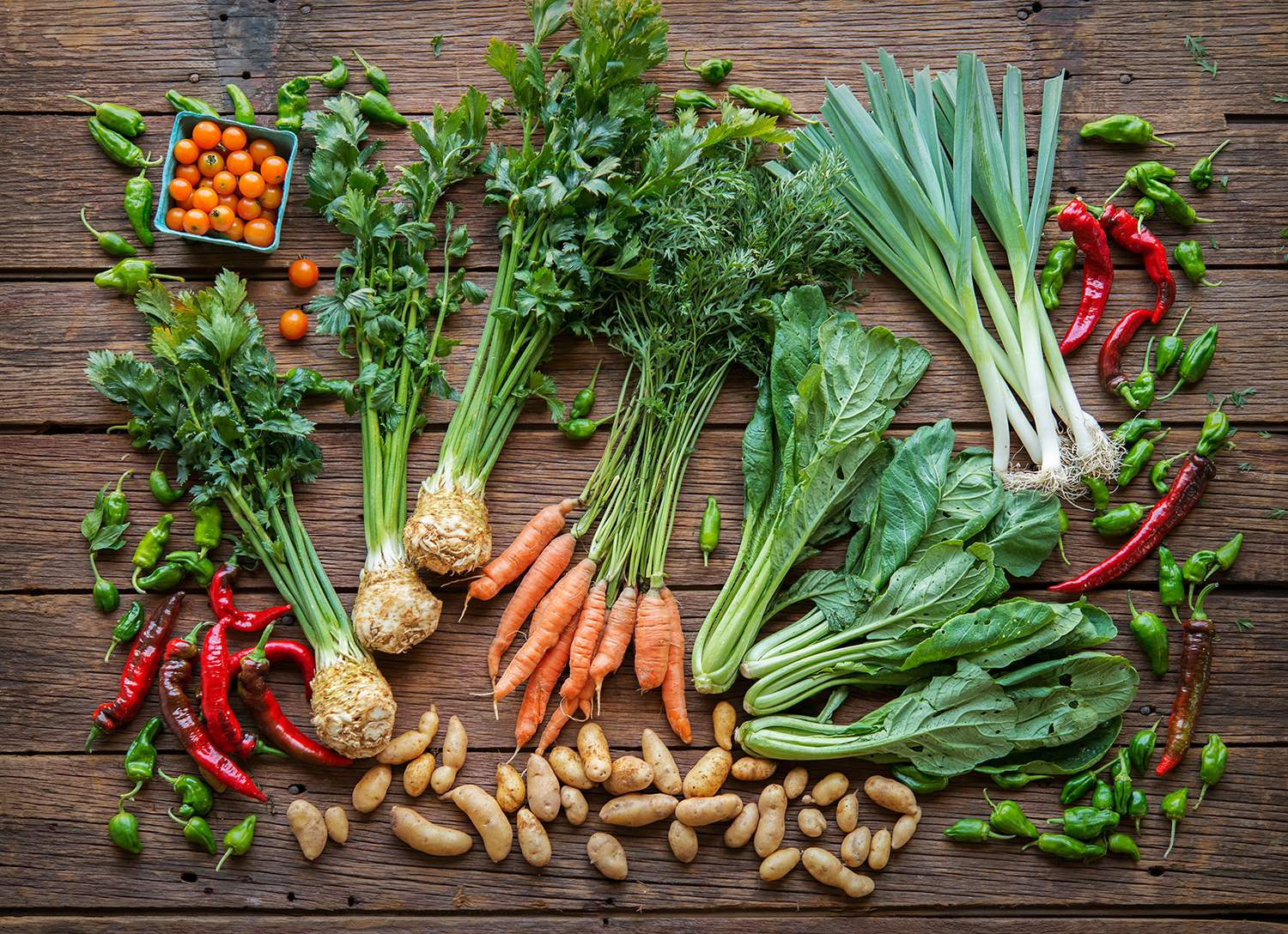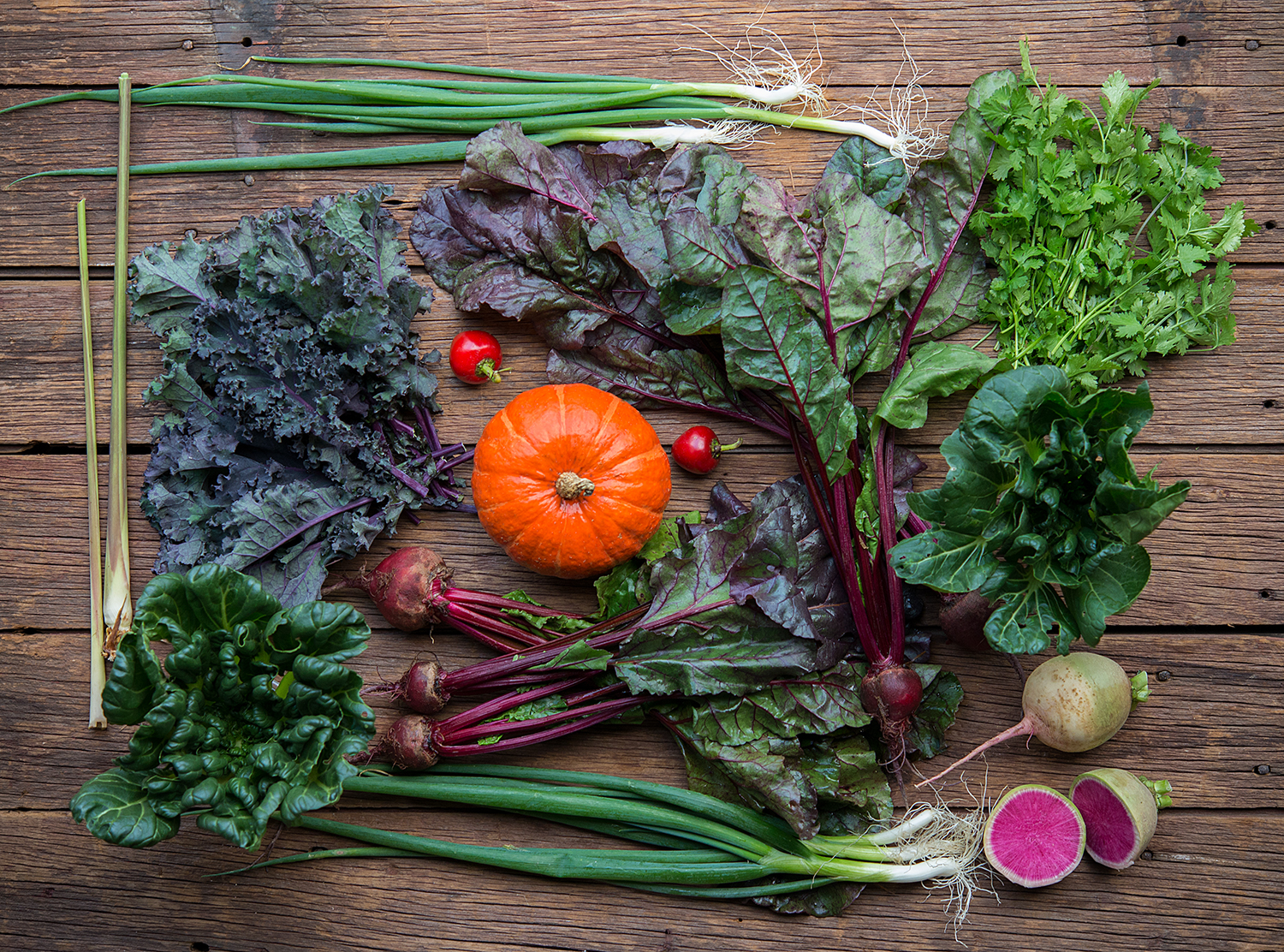It's that time of year when many farmers around the country are beginning to slow their breakneck pace after a full season of tilling, transplanting, irrigating, weeding, and hauling in heavy harvests. It's a time for sowing rows full of over-wintering garlic cloves, seeding soil-nurturing cover crops, pouring over seed catalogues, and setting goals and intentions for a new growing season. It's a time for hearty stews, colorful roasts of root vegetables + winter squash, and warm skillet cornbread slathered with butter and honey. It's also a time to hear the stories and lessons from farmers who have worked tirelessly all season to cultivate the soil and feed their communities. As farmers, our main focus may be out in the fields, but I think we're also damn good cooks - thanks to an innate sense for the basic culinary techniques + pairings that highlight the best flavors for a season's worth of vegetables.
Today I'm honored to continue the "Eat like a Farmer" series with Emma Cunniff, owner and operator of Kneehigh Farm in Chester County, PA. The ethics of permaculture—Earth Care, People Care, Fair Share—resonate through Kneehigh Farm, which grows a diverse range of vegetables for a robust CSA, as well as Farmers' Markets and Wholesale outlets. Emma also generously shares her farming knowledge, triumphs, and trials with the growing online community of fellow farmers on instagram (@kneehighfarm). A big thanks to Emma for taking the time to share some of her farm-based culinary knowledge and advice when it comes to cooking with seasonal (and sometimes unfamiliar) produce. I'm excited for everyone to read the full interview below, not to mention admire the photos of Emma's stunning weekly CSA shares! To learn more about Emma and her farm, be sure to check out www.kneehighfarm.com.
Where is your farm located and what do you grow? Kneehigh Farm is located on 7 acres outside of Pottstown, PA, just 45 minutes from Philadelphia. We grow over 100 diverse veggie varieties for our CSA, Farmers' Markets, and restaurants.
Walk us through a typical day on your farm and in your kitchen. A typical day varies drastically depending on the season. In the Spring, we're usually in the greenhouse seeding & listening to NPR, or running around trying to fix, purchase or construct new equipment/infrastructure/tools, etc. Lots of bread and cheese on these days, or tomato soup from canned heirlooms the previous year. I hate buying veggies from the grocery store before ours are ready to harvest, but I tend to break late February and start buying leafy greens (kale, or arugula). We start getting goodies out of the field early June. My favorite Spring treats are sugar snap peas, baby gem lettuce, scallions, and everything that makes a yummy spring roll.
Summertime is chaos, but such yummy meals. Depending on the day we're either transplanting, seeding, harvesting, doing tractor work, or delivering. My favorite breakfast/lunch in the summer is a fat heirloom tomato slice on a piece of toast with LOTS OF MAYO. We try to go home for about an hour in the middle of the day to beat the heat and eat a real meal. We never want to cook inside, so we do a lot of grilling and big salads. We usually have lots of extra summer squash, eggplants, okra, and peppers, so we grill those up for dinner along with sausage or chicken from our neighbors who we barter veggies with. Big refreshing cucumber or heirloom tomato salads with basil, or simple greens with a shallot vinaigrette are a staple. Padron peppers as a quick snack, and many many popsicles. Sometimes we come home at 9 pm, eat popcorn and go to bed, but usually, we try to stuff our face with as many tomatoes as possible.
Fall brings lots of soups/stews, simple roasted sweet potatoes, beets, cauliflower, brussels sprouts, rutabaga fries, miso-glazed kabocha squash, roast chicken with baby potatoes and fennel, stuffed peppers, leafy greens, and heartier salads. Fall is my favorite time to enjoy the fruits of our labor. Colder weather, shorter days, and lighter work allows us to have enough energy to cook and enjoy eating.
What is your favorite fruit or vegetable grow, and what's your go-to method to cook it? Some of my favorite veggies to grow are beets. They are always a favorite with their big, bushy greens at market, and they hardly have any pests! (except groundhogs.) If I'm starving, I'll quarter a bunch of beets, rub them in oil and salt and roast them at high heat for a simple side dish. I usually don't like boiling veggies, but there's something earthy and satisfying about a simple boiled beet. One of my favorite dishes we eat at a restaurant we sell to is a dip made from salt-roasted beets, mixed with tahini, dill, lemon, garlic, and a little mint. They're delicious added to pasta with their greens and goat cheese, or marinated in sherry vinegar and oil, and sprinkled on top of hearty green or grain salads. We grow Chioggia, or candy strip beets as well, which are beautiful sliced very thin on a mandolin and added to salads.
What kitchen tools could you not live without? A sharp chef's knife with about an 8" blade, absolutely. As well as tools to keep a knife consistently sharp. I love my dutch oven, as well as my small, medium and large cast iron pans. A large aluminum baking sheet, and definitely a muffin tin. A cheap Japanese mandolin, and loots of various sized glass tupperwear. A small saucepan for heating milk or oatmeal for 2. A medium size pot with a tight fitting lid for cooking rice/soups, as well as a larger stock pot. A few tools I love but could maybe live without: A non-stick pan with a designated plastic spatula. I only use mine for eggs, but I love it. Also, I have to admit I inherited a popcorn maker, and it makes snack time so much easier! Electric ice cream maker for sure.
What are the top three ingredients used most in your kitchen that don't come from your farm? Oil and salt definitely, and then a toss up between fish sauce, mayo, sherry vinegar, or butter.
Favorite cookbook(s)? "Zahav, A World of Israeli Cooking", "Lucky Peach 101 Easy Asian Recipes", "Lucky Peach Power Vegetables", "Jerusalem", "Cook's Illustrated The New Best Recipe", "The Art of Simple Food", "The Zuni Cafe Cookbook", "The Joy of Pickling"
Do you have go-to methods for preserving your harvests through the year (ie jamming, pickling, freezing)? If we had a chest freezer, I would definitely be blanching and freezing a lot more. I try to can at least 2 dozen quart jars of tomatoes, and ideally I would pickle more okra (my favorite) as well as lacto-fermented cucumber dill pickles. I'm on the hunt for a reliable salsa recipe that doesn't taste like ketchup. It's always my intention to do more preserving, but it's difficult in the heat of the summer when it's peak harvest time. Growing dry beans is something I want to experiment with, as well as dehydrating.
What advice do you give your CSA members for cooking through their weekly shares, especially with produce they may not be familiar with? Roast it. I feel I'm saying "400 degrees, oil, and salt" in every newsletter. But it really depends on the produce in each week. I try to dole out a lot of recipe options, and encourage people to research recipes online. I get a lot of ideas from just searching the ingredients in each share together and seeing what comes up. For example: "fennel, potatoes, and parsley recipes"--usually you find a combination of ingredients that looks right, often times there are many that look gross. I guess it's having an intuition for what ingredients go well together and a sense of how to prepare them so you end up with a diversity of textures and flavors, while still enjoying the delicious simplicity of fresh veggies. There are some veggies we give out that are only prepared a specific way, like Padron Peppers or okra, so we try to be very clear about our favorite methods. People experience a certain amount of trauma from being forced to eat food prepared in unappetizing ways. We try to reintroduce these foods in their fresh form, with recipes that celebrate their simplicity. Food tastes better when it's grown without chemicals, but also when it's prepared 'correctly'. It's fun to curate, in a sense, our CSA shares so the veggies go well together in certain recipes. (Ex. cabbage, radish, cilantro, carrot, and scallion makes a delicious Spring share--and an even better slaw to eat with tacos).
How has running a farm influenced your relationships with family, friends, and your local community? We do a lot of bartering, so we eat really well thanks to all our farmy friends that raise meet, grow fruit or mushrooms, or make cheese and bread. It's fun and nourishing to use food as currency. We prioritize meeting our CSA members face to face, so we've established friendships and personal connections with our neighbors. We make it clear that they are directly involved with our success, and should feel a sense of ownership of the farm. We cater to their desires, but are also excited to share our favorite foods, and experiences with them. It's motivating to feel their pride in us and in how we operate the farm, as well as their gratitude and support. In turn, we are grateful to feed them, introduce new foods, and provide healthy yummy veggies for our community. We just moved to this new property this year, and already we've established lasting relationships, built on nourishment and regeneration. My family lives in California, so I'm lucky to visit them for 2 months in the winter when the farm shuts down. My siblings have been able to come out, see what I do, and work alongside me. It's an honest lifestyle that I am proud to show my family and friends, and to be able to feed them well and celebrate what this earth provides for us.
Please share a favorite recipe for a simple, straight from the farm dish that you are craving this fall. I've been obsessed with this simple recipe lately: Slice smallish sweet potatoes into 1/4 in. rounds, tossing them with oil and salt, and roasting them at 425 degrees, making sure they're in one layer and not too crowded. Let them get browned on one side (about 15-20 mins) and flip to finish cooking, but make sure they're not breaking apart, getting mushy or steaming. I then make a dip from equal parts mayo and buttermilk, a little toasted sesame oil, tahini, miso (optional), rice vine vinegar, and sugar to taste. So simple, and so addicting!
Collard greens braised for an hour with onions, garlic, red pepper flakes, bacon or bacon grease, and chicken stock is super satisfying right now too.






